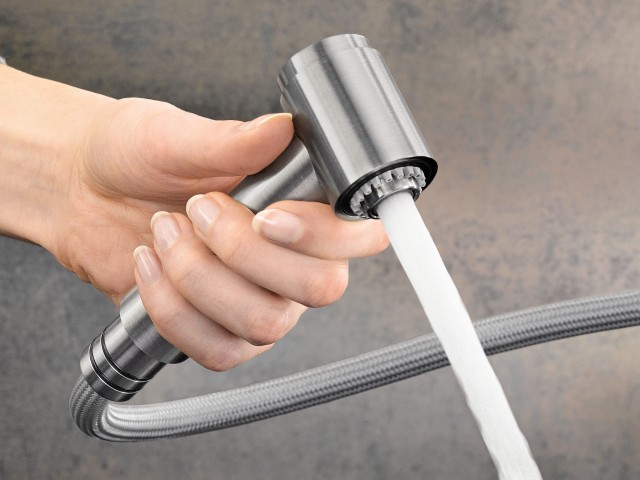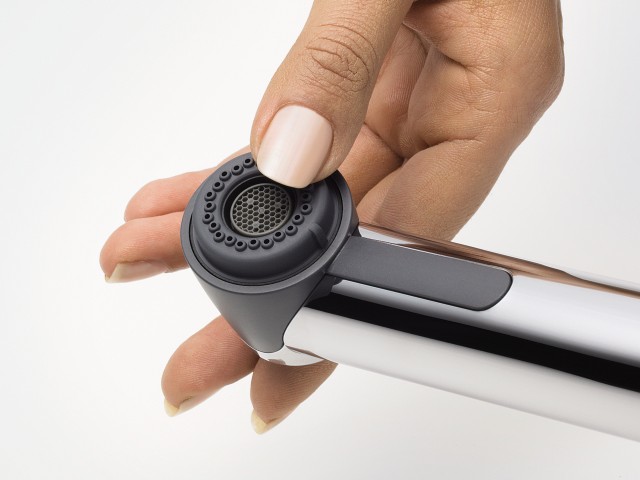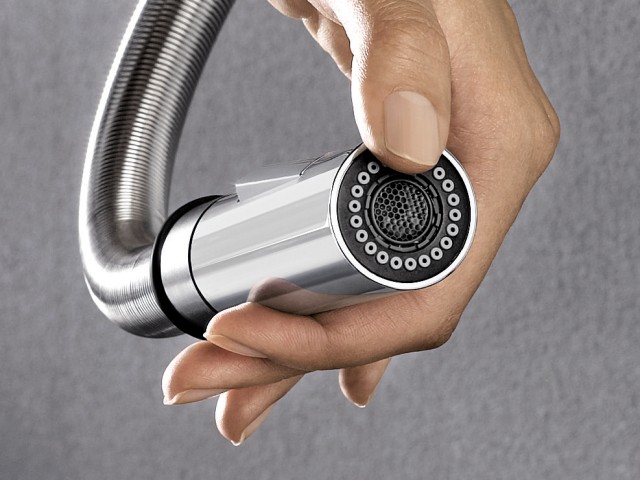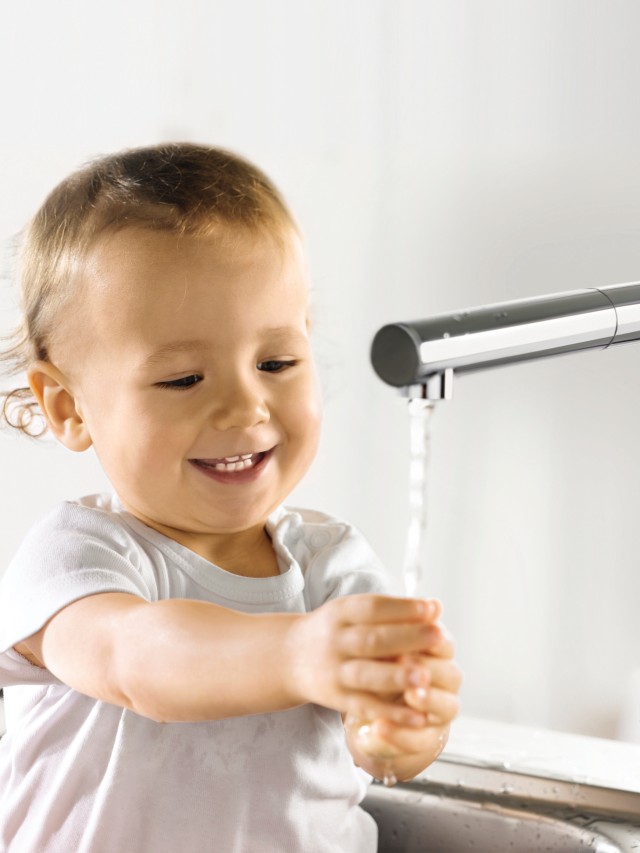Kitchen mixer taps require regular cleaning: as they are in daily contact with water, limescale can quickly form on the surface. The aerator, the fine-meshed sieve on the outflow, can also become clogged up with limescale deposits, which can cause the mixer tap to start spraying. The following care tips will help you to avoid these problems effectively, so that you can continue to enjoy a shiny tap for a long time to come.
Generally speaking, our mixer taps are easy-care and hygienic. This is thanks to their smooth surface, which allows hardly any dirt to settle on it. However, mixer taps do benefit from regularly cleaning. It doesn’t take much effort, but it needs to be done frequently. Take a mild cleaning agent and go over the mixer taps a few times with the soft side of a sponge. Now rub them dry with a microfibre cloth, and you’ll see that your mixer taps are back to being a stand-out feature of your kitchen once again, in just a few simple steps.




